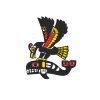Forests Minister Bruce Ralston signed an order Wednesday temporarily restricting industry and some farmers from using water from the river basin that stretches between Shawnigan Lake and Cowichan Bay.
The river has seen persistent low stream flows that threaten the survival of steelhead trout populations, according to the ministry. The order is intended to restore water levels and protect the trout in the area.
Under the order, approximately 108 licence holders in the Koksilah River watershed must stop using water for forage crops, which include grass for hay and silage, alfalfa and forage corn, while water used for industrial purposes must also cease, the province said.
The province says forage-crop farmers are among the largest agricultural water users in the region.
The B.C. Ministry of Agriculture and Food is working with the B.C. Cattlemen’s Association to provide hay and feed to farmers affected by the order by matching B.C. farmers with hay and feed sellers across Canada and the U.S., the province said.
“These decisions are always made as a last resort – recognizing the impact on people and businesses,” the ministry said in a statement Thursday.
“Because of the collective efforts of water licencees in the area, the province has been able to delay these actions until today. Provincial staff are monitoring the situation and working to balance water uses with environmental flow needs.”
The ministry says water used to extinguish or contain fires remains exempt from the order.
COWICHAN FISHING CLOSURE
The province is also extending a fishing closure on the Upper Cowichan River into the fall to protect fish stocks.
The closure extends from the Cowichan Lake Weir dam to the 66 Mile Trestle in Cowichan River Provincial Park.
The section of river was initially scheduled to reopen for fishing on Sept. 1, however the order extends the closure until Nov. 15.
“Ongoing drought conditions, in combination with sustained hot water temperatures, have led to the development of significant algal bloom in the Upper Cowichan River,” the ministry said.
“This bloom has led to reduced water quality, creating adverse conditions for fish and the aquatic ecosystem in the Upper Cowichan River and causing significant fish mortality in the Upper Cowichan River over an area of at least 10 kilometres.”
 The British Columbia government is restricting water usage from the Koksilah River and its tributaries in an effort to protect fish amid ongoing drought conditions on Vancouver Island.
The British Columbia government is restricting water usage from the Koksilah River and its tributaries in an effort to protect fish amid ongoing drought conditions on Vancouver Island. Email
Email



